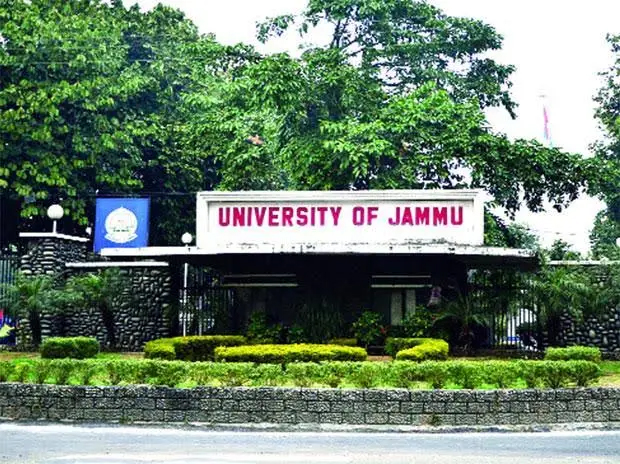Dr Parveen Singh
In a significant decision aimed at promoting sustainability and better campus management, the University of Jammu (JU) has barred the entry of four-wheelers within the campus premises starting December 5, 2024. This policy, according to university authorities, is designed to make the campus greener and to prevent random parking by unidentified individuals. While this move has drawn mixed reactions, it undoubtedly represents a crucial step in reimagining urban spaces within educational institutions. I recall visiting Shanghai Jiao Tong University in 2014 as part of a fellowship program. During that time, I was impressed by the university’s innovative parking solutions-an underground parking facility located beneath the main grounds. This arrangement allowed the surface area above to serve as a functional open space, blending utility with aesthetics. The vision of a similar arrangement at Jammu University has lingered ever since, and the recent decision seems to bring that dream closer to reality, albeit with notable differences. Unlike Shanghai’s integrated underground system, Jammu University has opted for a centralized parking facility near the residential area, accommodating approximately 300 vehicles. Staff members are now required to walk from this designated parking area to their respective offices. For those needing assistance, six e-vehicles have been introduced to ferry individuals across the campus. While this model does not fully replicate the Shanghai example, it aligns with the broader goal of reducing vehicular congestion and promoting a pedestrian-friendly campus.
While the initiative appears commendable on the surface, questions linger about its intent and longevity. The timing of the announcement-coinciding with an upcoming NAAC team visit-raises concerns about whether this is a genuine effort to address environmental and logistical challenges or merely a cosmetic change to impress the accreditation team. If the latter, the initiative risks being a short-lived endeavor, leaving the campus to revert to its previous state once external pressures subside. Assuming the initiative is a long-term commitment, it has the potential to yield several tangible benefits: reducing the number of vehicles on campus directly lowers carbon emissions, contributing to a cleaner and healthier environment; encouraging the use of bicycles and e-vehicles aligns with global sustainability goals and sets a precedent for other institutions; the absence of haphazardly parked vehicles enhances the visual appeal of the campus, creating a more inviting and organized environment; open spaces free from vehicular interference can be repurposed for recreational or academic activities, enriching campus life; with fewer vehicles, the risk of accidents and congestion within the campus is significantly reduced, ensuring a safer space for pedestrians and cyclists; and the introduction of e-vehicles ensures that the campus remains accessible to individuals with mobility challenges. Walking or cycling to destinations within the campus encourages physical activity among staff and students, contributing to better overall health. By adopting such measures, Jammu University positions itself as a pioneer in sustainable urban planning within educational institutions. This could inspire similar initiatives in other universities across the country.
Drawing lessons from Shanghai Jiao Tong University, Jammu University could explore the feasibility of constructing underground parking facilities beneath existing open areas. This would optimize space usage and allow the surface areas to remain functional and aesthetically pleasing. Collaboration with the Jammu Smart City Limited could be expanded to include establishing dedicated bicycle lanes within the campus, increasing the number of e-vehicles and bicycles available for public use, and introducing smart parking solutions, such as real-time monitoring and app-based access, to streamline parking management. My skepticism regarding the university’s motives is valid, especially given the history of short-lived initiatives in public institutions. However, if this decision is backed by consistent enforcement and infrastructural improvements, it could mark a turning point for the university. Transparency in implementation and regular updates on the initiative’s impact would go a long way in building trust among stakeholders. The restriction on four-wheelers is not without its challenges. Initial resistance from students, staff, and visitors is expected, particularly from those accustomed to the convenience of on-campus parking. Addressing these concerns will require effective communication about the long-term benefits of the initiative, ensuring the availability and reliability of alternative transportation options, such as e-vehicles and bicycles, and periodic reviews and adjustments based on feedback from the university community. The decision by Jammu University to bar four-wheelers is a bold move that reflects an awareness of contemporary environmental and logistical challenges. Whether this initiative stems from a genuine commitment to sustainability or external pressures, its potential benefits cannot be ignored. By learning from global examples and addressing local challenges, the university can transform this initiative into a lasting legacy. My long-cherished dream of a greener, more organized campus may finally be within reach, provided the university remains steadfast in its commitment to this cause.
(The author is Associate Professor, Department of Computer Sciences GDC Udhampur.)
Trending Now
E-Paper


